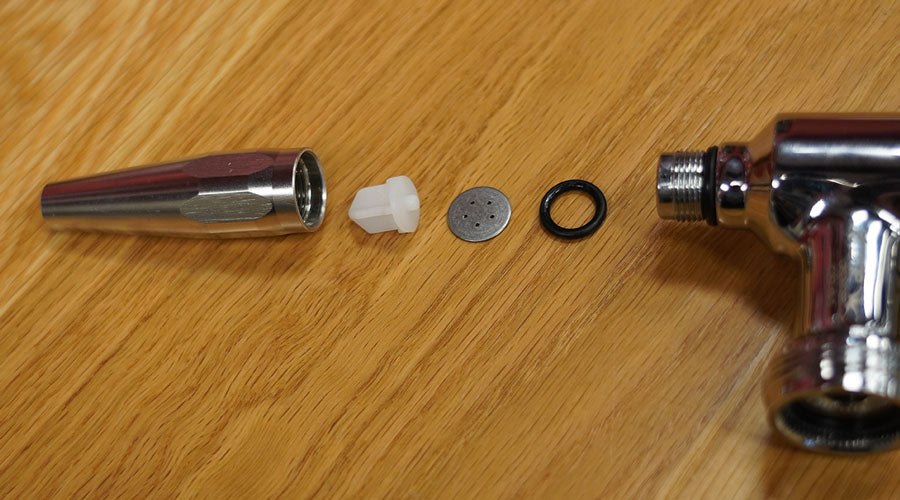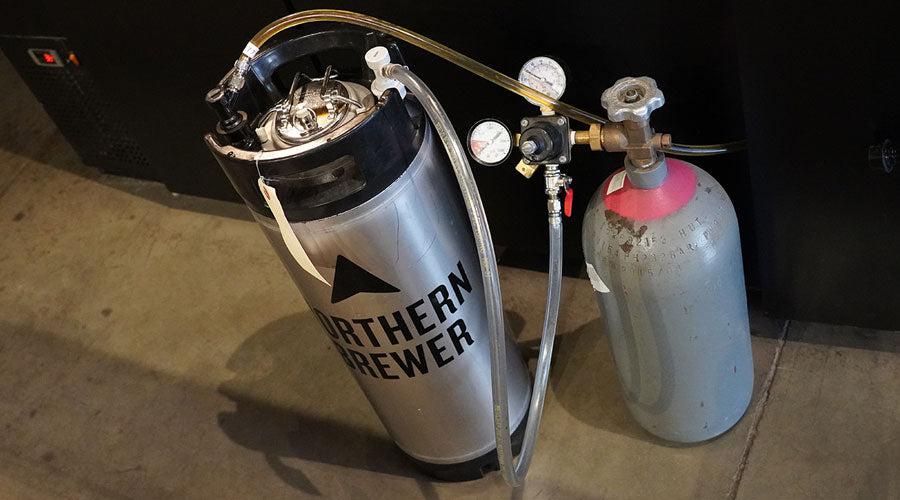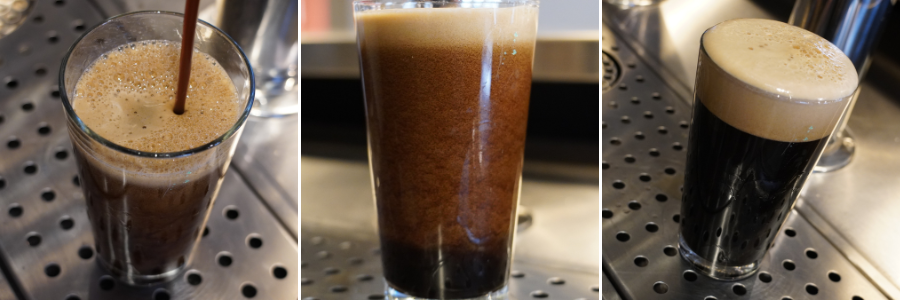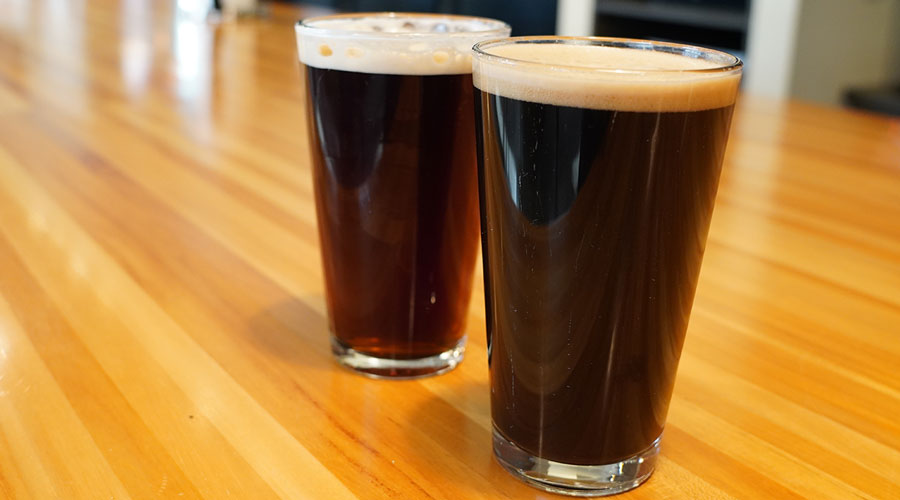March 14, 2024
Nitro Beer 101: How to Set up Equipment for Serving Homebrew on Nitro

Looking to add a velvety smooth mouthfeel to your next homebrew? Serving your beer on nitro is easy and results in an absolutely beautiful pour. The best nitro beers (and most common) are typically roasty stouts and porters - but you can add nitrogen to any beer style. And we’re here to show you how! We’ll cover the equipment you’ll need to upgrade your system and go step-by-step through the process - including some very important dos and don'ts.
The Difference Between Nitrogen and Carbon Dioxide
Nitrogen (N₂) bubbles are smaller than carbon dioxide (CO₂) bubbles. This creates the classic creamy or smooth mouthfeel in nitro beers, in contrast to the more effervescent, bubbly, or sometimes even prickly mouthfeel of fully carbonated beers. Nitrogen’s small bubble size also contributes to a more stable and longer-lasting head. The lower carbonation of nitrogenated beer combined with the different foam qualities of the head will likely subdue a beer’s aroma as well as soften the perception of bitterness in beer.
Two Options: 100% Nitrogen or Beer Gas Blend
To serve nitro beer at home, you have two options. Option #1 is 100% nitrogen. Exactly what it sounds like: 100% pure nitrogen. Option #2 is Beer Gas. Beer gas (sometimes called mixed gas or pre-mixed gas) is a blend of nitrogen and carbon dioxide that is most commonly used in the commercial industry (breweries, taprooms, bars, restaurants) to push beer through draught lines that are very long; for example, a line running from a basement keg cooler up through the floor of a taproom and connected to a tap tower at the bar. Homebrewers have taken the lead from craft brewers in using beer gas at home, but 100% nitrogen is also a legit option for serving nitro beer at home, as you’ll see below. There are two blend ratios that are good for homebrewers: 70% nitrogen and 30% carbon dioxide, or 75% nitrogen and 25% carbon dioxide – which are essentially interchangeable. There are rare cases out there where you might find a blend amount that’s higher carbon dioxide to nitrogen. Just look out for that. That's not what you want.
 VIDEO: Nitro Beer 101 | Equipment Installation & Pouring Demo
VIDEO: Nitro Beer 101 | Equipment Installation & Pouring Demo
Equipment for Serving Beer
Whether you choose 100% nitrogen or beer gas blend, here is a look at the main pieces of equipment you're going to need. First up, you need a 5 lbs nitrogen cylinder. Northern Brewer sells the empty tank that you’ll have filled with nitrogen or beer gas upon receipt. For the tank you’ll need a nitrogen regulator (which also works with either pure nitro or beer gas). This high-pressure regulator is similar to most carbon dioxide regulators except that it has inverse threads as a safety precaution so that you can’t accidentally thread one on the other. You're also going to need gas connector kit and liquid line connector kits, one for each keg of plan to serve on nitro.

Perhaps most importantly, a stout faucet is essential for pouring nitro beers with cascading bubbles and a thick foamy head. The bottom third of the faucet houses a restrictor plate (often called the sparkler), a small metal little disk with a bunch of holes to break up that flow to give you that cascading foam effect. Below the restrictor plate is a flow straightener (small white plastic piece in photo above), which brings that flow back together, so you're still pouring in a nice pour – not a splattering mess! The stout faucet attaches to the regular shank on your draught system. It comes with a standard tap handle, or you can put your favorite tap handle on top. Be sure to run cleaner and sanitizer solutions through the tap and lines before serving beer through the system to make sure everything is beer clean and free of any residue from manufacturer or shipping.
You can find all of these components bundled together in our Nitrogen Kegging System.

Putting Homebrew on Nitro
As for the process, the first thing to know is there's nothing really different about the way you brew or ferment these beers. The first big change in process begins upon carbonating the beer – if and how you’ll carbonate. If you plan to serve a beer on nitro, do not carbonate it like you would a beer you plan on serving on carbon dioxide; you will have an extremely foamy mess on your hands! There are two ways to proceed.
If you’re using 100% nitrogen: you will first carbonate the beer with carbon dioxide to a much lower than usual volume of carbonation, usually 1.5-2.0 volumes of carbon dioxide, then move it over to nitro. The idea here is you’re giving the beer just a little bit of carbonation via carbon dioxide before moving the keg over to nitrogen for actual serving/pouring. Here is a handy carbonation chart to help you figure out exactly what psi to set your carbon dioxide tank. As you see in our Nitro Beer 101 video, we put a keg of Dry Irish Stout and Irish Red Ale on carbon dioxide at just 5 psi for about a week for the first layer of carbonation. After that, we switched to 100% nitrogen for serving the beer. The nitrogen will be set to about 30-35 psi, which is very different from what most of us are used to from serving beer on carbon dioxide. Quick recap: you're carbonating this beer at a low psi with the understanding that in the second phase of its life on tap, the nitrogen pushes the beer and affects that smooth-bodied mouthfeel and visual presentation.
If you use beer gas: skip the step above where you carbonate with carbon dioxide and go straight to putting the beer on beer gas to both carbonate and nitrogenate (since the blend contains both gasses). In this case, you simply put the flat beer on beer gas, set the regulator to 30-35 psi and let it sit for a few days to minimally carbonate, then begin serving it at the same psi.
You can see both versions of these setups in our Nitro Beer 101 video.

Pouring Nitrogenated Homebrew
With your stout faucet installed and ready for action, let’s talk a little bit about how to pour nitro beers. There are two schools of thought for the pour. Traditionalists do what they call a "two-part pour." With the glass placed flat beneath the tap, the faucet is pulled forward to fill the glass about three quarters full. At first the beer will be very foamy, but you quickly see a beautiful settling of beer as the foam rises to the top to form a lovely signature cap of foam. Let the beer rest for about a minute to complete this separation. Then pull the tap forward again to top the glass off. Doing the pour in two parts allows for a bit more control in building a perfect head atop the beer. For even more control, you can also push the faucet away from you (stout faucets are hinged for both pull and push motion) which bypasses the restrictor plate and just top off the glass with less agitated beer.
A little bit of history. The two-part pour actually comes from Guinness. When they would pour stouts off of casks back in the day, they would have an older stale cask of stout and a brighter, more lively cask; they would blend the two to get that perfect presentation of really foamy head, nice foamy mouthfeel. In modern times, beer tenders follow the two-part pour for increased control, and also a little tip of the hat to nitro beer’s roots in cask beer. Because if you think about it, nitro is really a way of doing cask-like beer without actual casks, beer engines, etc. [Check out this really cool video of Brad Leone learning to pour a perfect pint of Guinness directly from experts at the brewery.]

Northern Brewer's Dry Irish Stout (right) and Irish Red Ale on nitro.
The effect of serving homebrew on nitro is a soft, smooth mouthfeel, almost pillowy on the palate, and a long-lasting dense head of foam. While any beer can theoretically be served on nitro, there are certain styles that are more common. Stouts, of course, are a great example. Dry Irish stouts, oatmeal stouts, even milk stouts. Other UK and Irish beers like Irish red ale, milds, Scottish ales are also popular choices for nitro. While you might find hoppier beers on nitro, it seems like more often than not they are malt-forward beers. Nitro is also a nice choice for beers lower in ABV as serving on nitro enhances the body of these beers in a way that serving on regular carbon dioxide might leave them a bit lifeless.
